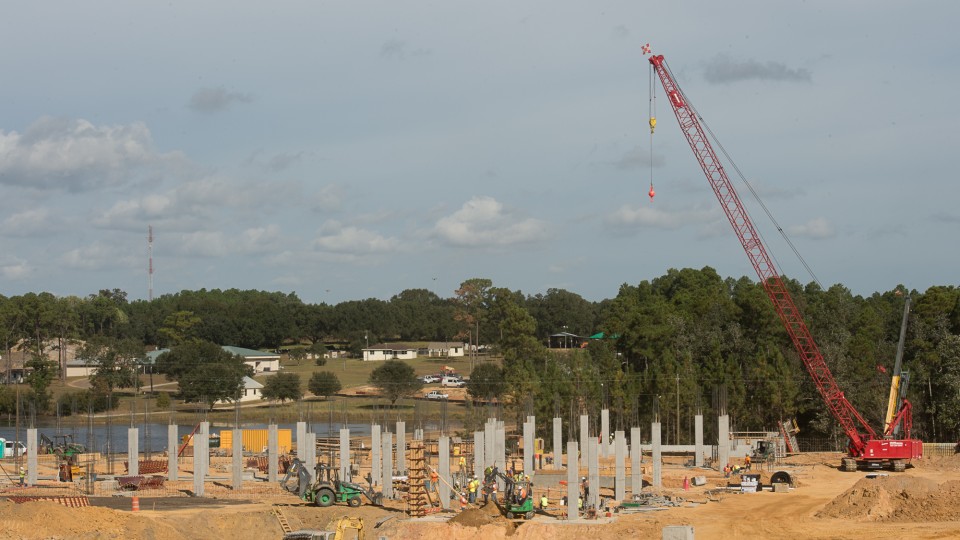Where is Pensacola's middle class?
- December 11, 2015
- / Shannon Nickinson
- / economy

Work under way at the Navy Federal Credit Union in Beulah, Fla., Friday, November 7, 2014. The credit union's investment
in job creation is boosting the middle class in the Pensacola metro area. Michael Spooneybarger/ Studer Community Institute
The middle class is shrinking, according to new data from the Pew Research Center.
As reported by NPR, since 1971, the share of middle class families in the U.S. has eroded.
The percentage of families who are middle class is one of 16 metrics that the Studer Community Institute includes in its Pensacola Metro Dashboard. The dashboard, developed with the University of West Florida, is a snapshot of the social, economic and educational well-being of the community.
it shows that the share of middle class households in the area has been essentially flat since 1990.
Pew starts with the U.S. median household income, which is the paycheck smack in the middle of them all, lined up from smallest to biggest. In other words, half of all households earn more, and half earn less. Then Pew defined "middle class" as households that had at least two-thirds of the median income, but no more than double that amount. And it adjusted for household size.
Bottom line: For a household with three people, being middle class means making between about $42,000 and $126,000. If your family of three makes less than $42,000, then you are in the lower class. If your family brings in more than $126,000, you are in the upper class.
Using that formula, Pew concluded that back in 1971, about 2 out of 3 Americans lived in middle-income households. Since then, the middle has been steadily shrinking. Today, just a shade under half of all households (about 49.9 percent) have middle incomes.
Slightly more than half of Americans (about 50.1 percent) either live in a lower-class household (roughly 29 percent) or an upper-class household (about 21 percent).
While overall median income has risen 34 percent since 1970, higher income families have seen their income increase 47 percent; lower-class families have seen their income increase only 28 percent.
Based on the Pew guidelines for what counts as middle class income — $42,000 to $126,000 — we have our fair share of ground to make up.
Data from the American Community Survey (the U.S. Census Bureau) for the occupations in our area give income estimates that show many in the Pensacola metro area will need two incomes to make the grade.
Given the fact that this year, 66 percent of Escambia County schoolchildren qualify for free or reduced-price lunch, the hollowing out of the middle class that Pew describes nationally, is hitting this community as well.
Which makes it very important that our community focuses its efforts in ways that will provide meaningful jobs with livable wages to people and build an educated workforce that is ready for school and able to adapt to the work-world's needs.

.jpg)
 CivicCon launches with a look at good growth in cities
CivicCon launches with a look at good growth in cities
 Building stronger brains one baby, one parent at a time
Building stronger brains one baby, one parent at a time
 SCI debuts commercial on Early Learning City
SCI debuts commercial on Early Learning City
 Entrecon: World class speakers and an opportunity to sharpen skills
Entrecon: World class speakers and an opportunity to sharpen skills
 PYP Quality of Life survey 2017
PYP Quality of Life survey 2017
 EntreCon Pensacola 2016: A look back
EntreCon Pensacola 2016: A look back
 Leadership tip: getting better employee takeaways
Leadership tip: getting better employee takeaways
 Leadership tip: be interested instead of interesting
Leadership tip: be interested instead of interesting
 Leadership tip: delivering difficult messages
Leadership tip: delivering difficult messages
 Brain Bags boost Arc, Early Childhood Court programs
Brain Bags boost Arc, Early Childhood Court programs